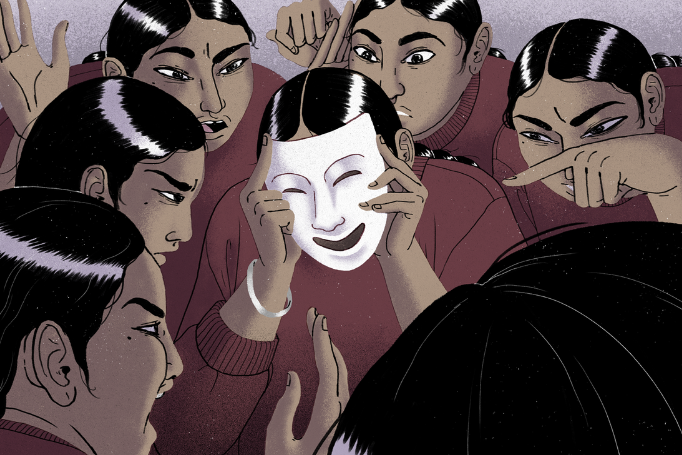Disney World might claim to be the happiest place on Earth, but year after year the World Happiness Report says otherwise. The World Happiness Report is a yearly publication that measures and compares happiness levels in countries using six variables: GDP per capita, social support, healthy life expectancy, freedom, generosity, and corruption. While no one would expect long, dark, cold winters to be a breeding ground for happiness, the Nordic region (Denmark, Norway, Sweden, Finland, and Iceland) frequently tops the list, all placing in the top ten since 2013. So what is it about these countries that foster happy citizens?
Ironically, the bleak winters Nordic countries experience might actually play a notable role in the region’s happiness. John Helliwell, the editor of the World Happiness Report, pointed out this possibility, stating that “There is a view which suggests that historically communities that lived in harsher weather were brought together by greater mutual support.” This makes sense when considering how harsher weather conditions would have given Nordic citizens a set of similar problems, allowing them to better relate to one another. We see this concept in other areas of the Nordic countries’ history, such as the development of the economic structure, at which family-driven agriculture was the core. This structure created narrower class divisions and problems over the shared ownership aspect everyone faced, which again helped citizens better relate to each other. This mutual understanding results in high societal trust, and aligns with social support, one of the six acknowledged variables in the World Happiness Report.
Another contributing factor to the high happiness levels in Nordic countries could be the emphasis on work-life balance. For example, Sweden boasts 480 days of paid parental leave that can be split between the parents however they see fit, in comparison to the US, which only guarantees up to twelve weeks of unpaid leave. Shared parental leave addresses work-life balance issues by giving mothers the opportunity to focus on their careers and fathers the opportunity to be more active in the early stages of their child’s life. The effects of shared parental leave put Nordic countries a step closer to gender equality, with the share of women in the workforce being greater than the global average. Additionally, in Norway, Sweden, and Iceland there is a father’s quota, which reserves 12-15 weeks of the shared parental leave for fathers, resulting in nine out of ten fathers taking paternity leave. By offering generous parental leave, Nordic countries strike a work-life balance for both parents, avoiding issues that face both genders.
The final observable factor in the Nordic phenomenon is the abundance of time Nordic citizens spend outdoors. Spending time outdoors is deeply ingrained in Nordic cultures, best characterized by the Norwegian term “friluftsliv” which loosely translates to “an outdoors lifestyle”. The term is used to describe anything from walking during a lunch break to commuting on cross-country skis. In the winter, the frigid weather does not deter the Nordic citizens from this outdoor lifestyle. Instead, they find ways to embrace it, like relaxing in a hot sauna and then cooling off with a dip in freezing water. Nordic citizens agree that spending time outdoors is essential for their physical and spiritual well-being, giving them energy and keeping them in shape.
The first thing you picture when you think of the happiest place on Earth would likely be a tropical paradise, rather than the cold, isolated land mass of the Nordic region. However, the Nordic countries possess unique characteristics that explain their decade-long reign of filling up the top ten spots on the World Happiness Report. They have high levels of social trust, made possible through the history of their economic model and perhaps their severe weather conditions. They prioritize work-life balance, addressing concerns for both genders when a child enters the family. Additionally, their culture approaches happiness and health in a simplistic way, connecting with the outdoors in any way possible to enrich the mind and body. The Nordic countries have achieved the immense accomplishment of widespread happiness, from which the rest of the world should follow.
Works Cited:
Bekkåsen, Erik. “How Well Do You Know the Vacation Rules in the Nordic Countries?” Vacation Rules in the Nordic Countries, 15 Mar. 2023, www.azets.com/blog/how-well-do-you-know-the-vacation-rules-in-the-nordic-countries/.
“Can We Be as Happy as Scandinavians?” BBC News, BBC, 20 Mar. 2017, www.bbc.com/news/world-39331314.
Giannotta, Brent. “What Americans Can Learn from Scandinavians, the Happiest People in the World.” Thrillist, 3 Jan. 2018, www.thrillist.com/travel/nation/why-scandinavians-are-happiest-people-in-the-world.
Helliwell, John F, et al. “World Happiness, Trust and Social Connections in Times of Crisis.” The World Happiness Report, 20 Mar. 2023, worldhappiness.report/ed/2023/world-happiness-trust-and-social-connections-in-times-of-crisis/.
“Learnings from Scandinavia on How Shared Parental Leave Can Encourage Gender Equality.” Reward and Employee Benefits Association (REBA), 1 Sept. 2020, reba.global/resource/learnings-from-scandinavia-on-how-shared-parental-leave-can-encourage-gender-equality.html#.
Martela, Frank, et al. “The Nordic Exceptionalism: What Explains Why the Nordic Countries Are Constantly among the Happiest in the World.” The World Happiness Report, 20 Mar. 2020, worldhappiness.report/ed/2020/the-nordic-exceptionalism-what-explains-why-the-nordic-countries-are-constantly-among-the-happiest-in-the-world/.
Nikel, David. “World Happiness Report: Are the Nordic Countries Really so Happy?” Forbes, Forbes Magazine, 8 Nov. 2022, www.forbes.com/sites/davidnikel/2022/03/19/world-happiness-report-are-the-nordic-countries-really-so-happy/?sh=46009ce75d1c.
Rahim, Zamira. “Happiness Report: Why Does Scandinavia Always Win? .” Time, time.com/collection/guide-to-happiness/4706590/scandinavia-world-happiness-report-nordics/. Accessed 12 Nov. 2023.
Savage, Maddy. “Friluftsliv: The Nordic Concept of Getting Outdoors.” BBC Worklife, BBC, 25 Feb. 2022, www.bbc.com/worklife/article/20171211-friluftsliv-the-nordic-concept-of-getting-outdoors.
“Shared and Paid Parental Leave .” Norden Diva Portal, Nordic Council of Ministers, norden.diva-portal.org/smash/get/diva2:1240186/FULLTEXT03.pdf. Accessed 12 Nov. 2023.
“What’s the Secret behind Nordic Happiness?” The Nordics, www.thenordics.com/trace/whats-secret-behind-nordic-happiness. Accessed 12 Nov. 2023.
Yu, Jessica. “Why Are Nordic Countries so Happy and What Can We Learn from Them?” Business Review at Berkeley, 7 Mar. 2023, businessreview.berkeley.edu/why-are-nordic-countries-so-happy/#:~:text=To%20begin%2C%20one%20of%20the,community%20a%20more%20pleasant%20experience.

 My Imposter Syndrome: The Effects of “Friendly” Competition
My Imposter Syndrome: The Effects of “Friendly” Competition